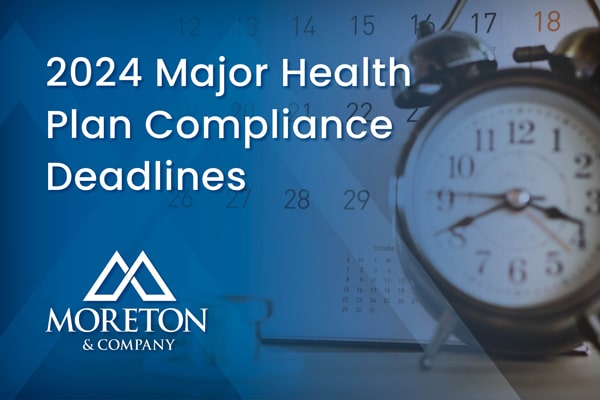
DASH Diet:
An Eating Plan for Diabetes Management
The DASH (Dietary Approaches to Stop Hypertension) eating plan is an acceptable eating pattern for people who have diabetes. In addition to promoting blood pressure control, this eating pattern has been shown to improve insulin resistance, hyperlipidemia, and even being overweight/obese. This balanced approach promotes consumption of a variety of foods and is appropriate for the entire family. The appeal of the DASH eating pattern for patients is that it is also practical; it does not require special foods or supplements.
The DASH eating pattern promotes blood pressure reduction by encouraging the consumption of foods that are low in saturated fat, total fat, cholesterol, and sodium and high in potassium, calcium, magnesium, fiber, and protein. In terms of actual food choices, the DASH eating pattern encourages whole grains, fat-free or low-fat dairy products, fruits, vegetables, poultry, fish, and nuts. Foods that are limited include fatty meats, full-fat dairy products, tropical oils (e.g., coconut, palm, and palm kernel oils), and sweets and sugar-sweetened beverages.
The DASH eating pattern is closely aligned with the USDA’s dietary recommendations, as outlined in the 2015–2020 Dietary Guidelines for Americans. As described in chapter 1 of the USDA guidelines, the “Key Recommendations” for healthy eating patterns are as follows: Consume a healthy eating pattern that accounts for all foods and beverages within an appropriate calorie level.
A healthy eating pattern includes:
- A variety of vegetables from all the subgroups-dark green, red and orange, legumes (beans and peas), starchy, and other
- Fruits, especially whole fruits
- Grains, at least half of which are whole grains
- Fat-free or low-fat dairy, including milk, yogurt, cheese, and/or fortified soy beverages
- A variety of protein foods, including seafood, lean meats and poultry, eggs, legumes (beans and peas), nuts, seeds, and soy products
- Oils
A healthy eating pattern limits:
- Saturated fats and trans fats, added sugars, and sodium
The DASH eating plan (or DASH-like eating plans) has also led to improvements in insulin sensitivity, further demonstrating that this type of eating plan may be helpful for individuals with prediabetes or who are at risk for type 2 diabetes.
A meta-analysis (23) of prospective cohort studies looked at the differences among various diets’ effects in preventing type 2 diabetes. The authors concluded that several diets, including the DASH diet and the Mediterranean diet, were associated with a 20% decrease in the risk of future type 2 diabetes.
Campbell AP. DASH Eating Plan: An Eating Pattern for Diabetes Management. Diabetes Spectr. 2017. May;30(2):76-81. doi: 10.2337/ds16-0084. PMID: 28588372; PMCID: PMC5439361.
Diabetes Management
Approximately 30.3 million Americans have diabetes, and the rate of new cases continues to rise each year. The CDC estimates almost one-third of people with diabetes may be undiagnosed. Untreated diabetes is more likely to result in costly, dangerous complications like heart disease, strokes, amputations, and kidney disease.
There are two main types of diabetes:
Type 1 diabetes – This condition is typically diagnosed in children and young adults and occurs when the body’s immune system attacks insulin-producing cells, resulting in a complete lack of insulin. Different factors, such as genetics and some viruses, may cause type 1 diabetes. Type 1 diabetes makes up only 5 percent of those with the disease.
Type 2 diabetes – This condition occurs when the body does not produce enough insulin or cannot use insulin effectively. Type 2 diabetes accounts for 90 to 95 percent of all diagnosed cases.
Self-care is key to preventing and managing diabetes, and it is essential that those with diabetes understand the importance of eating well, being active and monitoring their blood sugar. Here are some ways you can learn more about diabetes:
- If you’re concerned about diabetes, talk to your healthcare provider about blood glucose screening. The ADA recommends screening every three years for individuals aged 45 or older. If you’re younger but have risk factors like being overweight or having a family history of diabetes, consider screening too. Stay informed, discuss screenings with your provider, and take proactive steps to manage your health. Regular screenings and managing risk factors can help you make informed decisions and reduce the risk of complications related to diabetes.
- Taking care of your health and preventing diabetes is important. It starts with adopting healthy eating habits and staying physically active.
- Did you know that people with diabetes are almost three times more likely to die from influenza or pneumonia? That’s why it’s crucial to take preventive measures, such as getting vaccinated. Consider taking advantage of on-site vaccinations and educate yourself on the importance of vaccination. By doing so, you can better protect yourself during the cold and flu season and reduce the risk of complications.
– Mental Health Moment –
Preparing Your Mental Health
for the Holidays
The holiday season can provide lots of opportunities to connect with others, share and create memories, and reconnect with family, friends, and even yourself! However, the holidays can also bring lots of added stress from things like shopping, preparing meals, or uncomfortable social settings. Here are some tips that can help you prepare your mental health for the holiday season:
- Focus on what you can control – Control what you can to take care of your physical and mental health. If you notice that you are getting stressed from things like the news or travel plans, consider taking a break from those things or do a little research to put your mind at ease.
- Maintain healthy habits – It’s important to not disconnect from yourself during the holiday season. Make time to maintain habits that make you feel like yourself. Along with these things, ensure that you are still doing things that help you to have good mental health daily like getting enough sleep, eating a healthy diet, and exercising regularly.
- Connect with others – The holiday season brings together family and friends. This can be a great way to get some much-needed social interaction. Remember to contact those who couldn’t make it to holiday plans! It never hurts to reach out to someone to see how they are doing. If you feel overly stressed, you can also talk with those around you to relieve some stress.
- Breathe – Don’t forget to take breaks during the holidays. You can easily get caught up in travelling, shopping, socializing, and other activities. Take some time for yourself and remember to breathe. Practice some mindfulness or meditation through yoga, breathing exercises, or other ways to help you relax.


